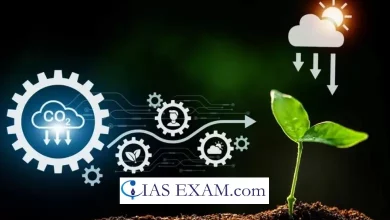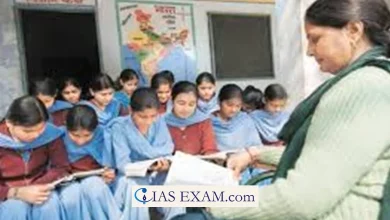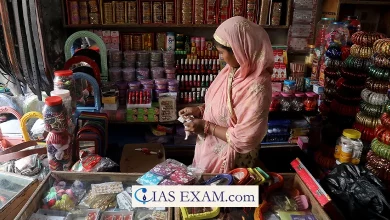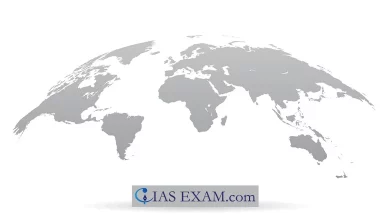Aligning Higher Education with the United Nations SDG
[GS Paper 2 - Government Schemes and Policies]
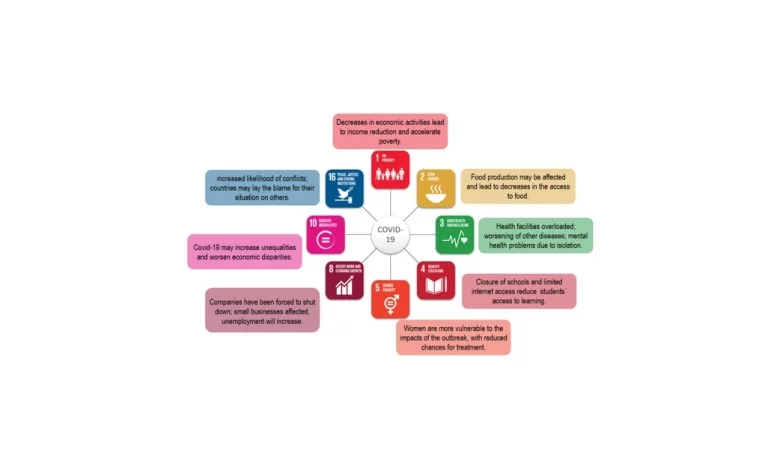
Context – The SDGs Report 2023 highlights sluggish progress exacerbated by the lingering effects of COVID-19, climate change impacts, geopolitical conflicts, and a fragile global economy. This universal struggle is particularly pronounced in the least developed countries, including India. Despite India’s resilience in facing global crises, achieving the SDGs remains a challenge.
Higher education plays a pivotal role in shaping the future of societies and economies. It not only equips individuals with knowledge and skills but also fosters critical thinking and innovation. In today’s globalized world, it is imperative for higher education institutions to align themselves with broader global objectives, and one of the most significant global frameworks is the United Nations Sustainable Development Goals (SDGs).
Significance of SDGs
- The United Nations Sustainable Development Goals (SDGs) represent a global commitment to address pressing socio-economic and environmental challenges.
- These 17 goals with 169 targets, unanimously agreed upon by all 193 UN member states, aim to eradicate poverty, enhance education, reduce inequality, and stimulate economic growth by 2030.
- The United Nations SDGs are a set of 17 interconnected goals aimed at addressing some of the most pressing challenges facing humanity, including poverty, inequality, climate change, and environmental degradation.
- These goals provide a comprehensive blueprint for a more sustainable and equitable world by 2030.
- They are not just the responsibility of governments and international organizations; they call for collective action from all sectors of society, including higher education institutions.
NEP 2020 and its Alignment with SDGs
India’s commitment to realizing the SDGs is evident through recent actions and policies. The National Education Policy (NEP) 2020 in India closely aligns with the United Nations Sustainable Development Goals (SDGs), particularly SDG4, which focuses on quality education.
- Quality Education and Lifelong Learning (SDG4): NEP 2020 emphasizes quality education for all in India, addressing disparities and promoting inclusivity, in alignment with SDG4. It also recognizes the importance of lifelong learning, supporting SDG4’s objective of inclusive and equitable quality education throughout one’s life.
- Gender Equality (SDG5): The policy promotes gender equality in education, ensuring equal opportunities for girls and women. It aims to eliminate gender-based discrimination and stereotypes in education, aligning with SDG5’s objective.
- Employability and Skills Development (SDG8): NEP 2020 focuses on equipping students with practical skills and knowledge, making them more employable. This aligns with SDG8’s goal of promoting sustained, inclusive, and sustainable economic growth, full and productive employment, and decent work for all.
- Environmental Sustainability (SDG 13): The policy acknowledges the significance of environmental education and sustainability. It encourages eco-friendly practices and awareness of environmental issues among students, aligning with SDG 13’s objective of combating climate change.
- Research and Innovation (SDG9): NEP 2020 underscores the importance of research and innovation in higher education. It seeks to foster a culture of innovation and entrepreneurship, aligning with SDG 9’s goal of promoting inclusive and sustainable industrialization and fostering innovation.
- Global Partnerships for Development (SDG17): The policy promotes international collaboration in higher education and research. It aims to establish partnerships with global institutions, foster knowledge exchange, and align with SDG17’s objective of strengthening global partnerships for sustainable development.
Need to Align Higher Education with SDGs
- Developing Global Citizens: Aligning higher education with the SDGs helps in fostering a sense of global citizenship among students. It encourages them to think beyond national borders and consider the broader impact of their actions. By engaging with the SDGs, students can gain a deeper understanding of global issues and develop the skills necessary to address them.
- Relevant and Purpose-Driven Education: The SDGs provide a framework for ensuring that education remains relevant and purpose-driven. By integrating sustainability and social responsibility into curricula, higher education institutions can equip students with the knowledge and skills needed to tackle real-world challenges. This approach not only enhances the quality of education but also prepares students for meaningful careers.
- Innovation and Research: Many of the SDGs require innovative solutions and research to be achieved. Higher education institutions are hubs of research and innovation, and by aligning their research agendas with the SDGs, they can contribute to finding solutions to complex global problems. This can lead to advancements in various fields, including technology, healthcare, and environmental science.
- Partnerships and Collaboration: The SDGs emphasize the importance of partnerships and collaboration among different stakeholders. Higher education institutions can serve as catalysts for collaboration between academia, government, businesses, and civil society. Such collaborations can lead to the development of innovative projects and initiatives that have a meaningful impact on the SDGs.
Challenges and Opportunities
While aligning higher education with the SDGs offers numerous benefits, there are also challenges to overcome. These include:
- Resistance to Change: Implementing changes in curricula and institutional practices can be met with resistance from faculty, administrators, and even students. Overcoming this resistance requires effective communication and leadership.
- Resource Constraints: Aligning with the SDGs may require additional resources, both financial and human. Many higher education institutions may face budget constraints, making it challenging to invest in sustainability initiatives.
- Measuring Impact: Measuring the impact of aligning with the SDGs can be complex. It requires developing appropriate metrics and evaluation methods to assess how well institutions are contributing to the goals.
Despite these challenges, there are significant opportunities:
- Enhanced Reputation: Higher education institutions that actively contribute to the SDGs can enhance their reputation and attract students, faculty, and funding. Being recognized as socially responsible and environmentally conscious institutions can be a competitive advantage.
- Student Engagement: Engaging students in SDG-related activities can lead to increased motivation and a sense of purpose. It can also result in higher levels of student retention and satisfaction.
- Research Funding: Many international organizations and foundations provide funding for research related to the SDGs. By aligning research with these goals, higher education institutions can access additional funding opportunities.
Conclusion
Aligning higher education with the United Nations SDGs is not only a moral imperative but also a strategic move for institutions worldwide. It empowers students to become global citizens, prepares them for meaningful careers, fosters innovation and research, and encourages collaboration among diverse stakeholders.
While challenges exist, the benefits of aligning with the SDGs far outweigh the drawbacks. Higher education institutions that embrace this alignment can contribute to a more sustainable and equitable future, ultimately fulfilling their mission to educate and empower the leaders of tomorrow. In doing so, they become integral partners in the global effort to achieve the SDGs by 2030.
SOURCE: The Hindu





.png)
